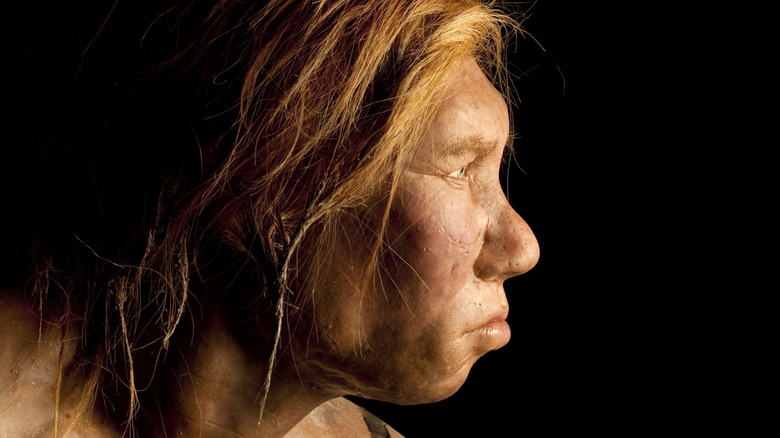The Unexpected Origin Behind The Human Nose: How Did It Get Its Shape?
Despite the fact that it's vital to a person's very survival, it's not unheard of for the nose to be a source of dissatisfaction or even frustration. For some folks, their level of dismay at the way their noses look is enough reason for them to consider going under the knife for some cosmetic enhancements. (Here's everything you need to know about rhinoplasty.) But why do our noses look the way they do?
When Homo habilis — considered to be the first "true" representative of the Homo genus, aka "true humans" — first popped up on the fossil record less than 3 million years ago, this marked the beginning of what New Scientist described as a "dramatic reorganization" of the hominin skull. Some experts have suggested that modern man's nose and nasal cavity are shaped the way they are because of space constraints: As our ancestors evolved bigger brains, human faces decreased in size. Thus, the nose had to adjust accordingly.
Another popular explanation as to how the human nose got its shape: the changing climate. Specifically, human noses likely evolved based on their local climate conditions to prevent lung damage (a sort of "air conditioning" function, if you will).
How climate variations may have shaped the human nose
The shape of our noses may have also been partly inherited from Neanderthals: According to existing research, Neanderthals and H. sapiens ancestors may have mated, allowing the genetic passing-down of the former's nasal traits (via UCL).
In a 2023 study published in Communications Biology, a team of researchers studied data from over 6,000 Latin American participants, all of whom were of mixed African, European, and Native American descent. The scientists noted particular facial traits, connected them to specific genetic markers, and studied them side by side with similar data obtained from African, East Asian, and European participants (i.e., where Neanderthals evolved). "Here, we find that some DNA inherited from Neanderthals influences the shape of our faces," shared co-author Dr. Kaustubh Adhikari (via UCL).
Another co-author, Dr. Qing Li, explained that "different shaped noses may be better suited to different climates that our ancestors lived in," suggesting that as they moved from Africa to other areas of the world, their inherited nasal shapes likely helped them survive in areas with lower temperatures. (By the way, here's the real reason your nose runs when it's cold.)
Not everyone agrees with the 'air conditioning' hypothesis
Findings of a 2017 study in PLoS Genetics support the idea that local climates shaped early humans' noses. Furthermore, study co-author Mark D. Shriver told Penn State that our ancestors may have found certain nose shapes more attractive than others, influencing their mating choices (and thus, the nose shapes that would get passed on to subsequent generations).
However, not all scientists are convinced. Authors of a 2016 study in PLoS Computational Biology used computer modeling to determine that the human nose is actually, well, pretty terrible at conditioning the air that enters it, especially when compared to other modern primates. "This indicates our protruding nose has few contributions to air-conditioning in the nose and nasal cavity," explained co-author Takeshi Nishimura (via New Scientist). Instead, he and his fellow researchers suggested that other factors (e.g., facial shape development) were likely to have had a greater influence on human nose development than climate adaptation.
Our ideas on human nose evolution may continue to change as scientists continue to search for clues. While there's enough evidence in favor of climate adaptation and natural selection, in terms of conclusively explaining the shape of our noses, nobody knows for sure. (Read about how aging has an unexpected effect on your nose.)


